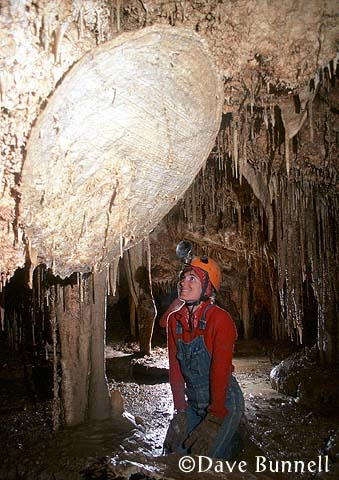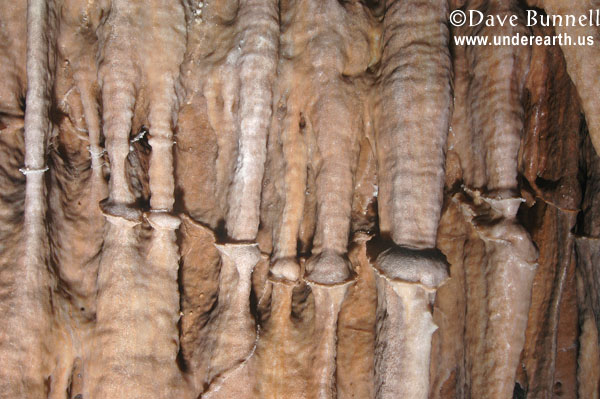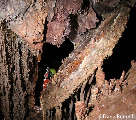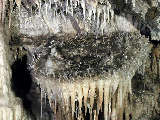
| A cave shield forms
as calcite-rich seep water under hydrostatic pressure is forced from tiny
cracks in a cave wall, ceiling or occasionally, floor. As this seep water
loses carbon dioxide to the cave air, calcite is deposited as parallel
extensions to the cracked walls. The result: two thin, sandwiched disks
separated only by a capillary, sheet-like void that feeds their growth.
Often, seep water feeding a shield does not lose all of its carbon dioxide at the shield rim.. Additional CO2 loss by water slowly dribbling from the shield rim gives rise to draperies, as seen in the left photo. If a shield becomes clogged, perhaps due to sealing of its rim during dry spells, backed-up seep water may find escape through perforations in the shield disks. This may form stactites (as in the lower photo, or masses of tangled helictites (left 3 photos in table). The third or center photo shows a series of miniature shields forming where water has been squeezed through a crack in a flowstone wall. These sort of incipient shields are also known as welts. |
![]()
 |
 |

 |
 |
 |
 |
Choose a thumbnail to zoom in on more images of shields
![]()
| Back to: | |
 |
Created: June 19, 1995 Last Updated: December 18, 2012 Author: Djuna Bewley |